Hiroshima Peace Memorial (Genbaku Dome)
By Rachel Heller
What is Hiroshima Peace Memorial?
On August 6, 1945, the US dropped an atomic bomb on the city of Hiroshima. It was the first ever use of an atomic bomb. The blast vaporized almost everything within a two-kilometer radius and 2/3 of all buildings in the entire city. Counting everyone who died immediately and those who died afterwards of injuries and radiation sickness, 140,000 people died by the end of the year. Many more died later of radiation-related illnesses.
Disclosure: This article contains affiliate links. Making a purchase through an affiliate link will mean a small commission for this website. This will not affect your price.
Strictly speaking, this UNESCO site is made up of the remains of a single building – the former Hiroshima Prefectural Industrial Promotional Hall, called Genbaku Dome or, in English, the A-Bomb Dome. It has been preserved as it was after the blast, one of few buildings so close to the hypocenter to survive even partially. However, in a 42.7-hectare (105.5 acres) buffer zone around the building, the Hiroshima Peace Memorial has been created, marking the event.
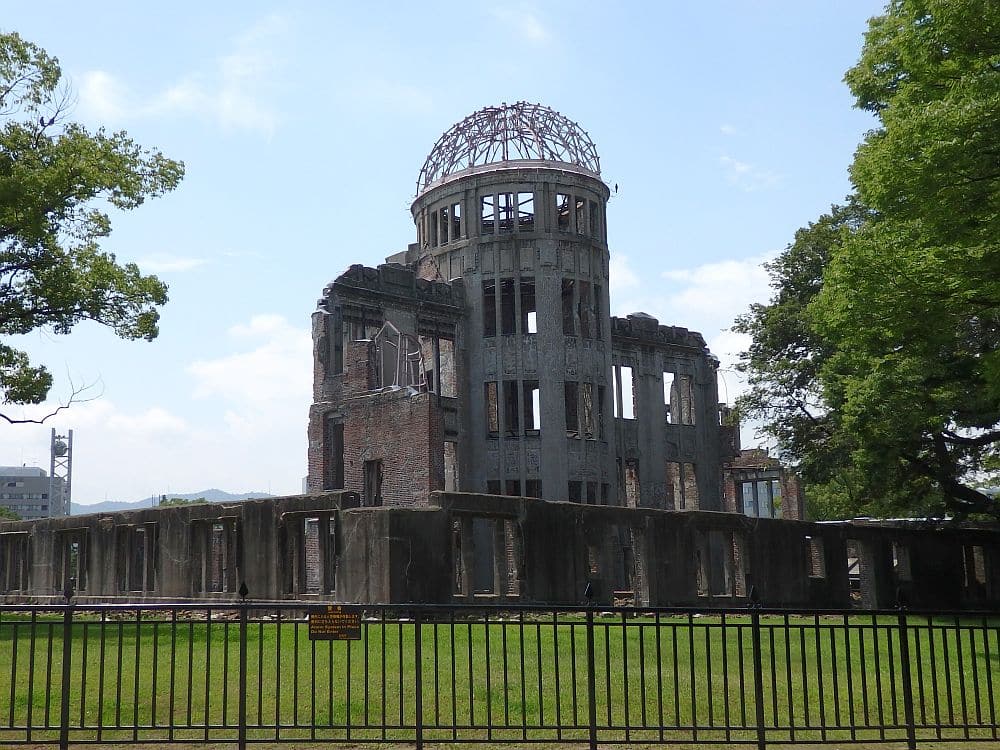
Why is Hiroshima Peace Memorial a UNESCO World Heritage site?
While other bigger bombs have been exploded at test sites since Hiroshima, only two have ever been used in war: this one and the Nagasaki one a few days later. According to UNESCO, the site “is a stark and powerful symbol of the achievement of world peace for more than half a century following the unleashing of the most destructive force ever created by humankind.” The point is not the building itself but what it symbolizes: “the tremendous destructive power, which humankind can invent on the one hand; on the other hand, it also reminds us of the hope for world permanent peace.”
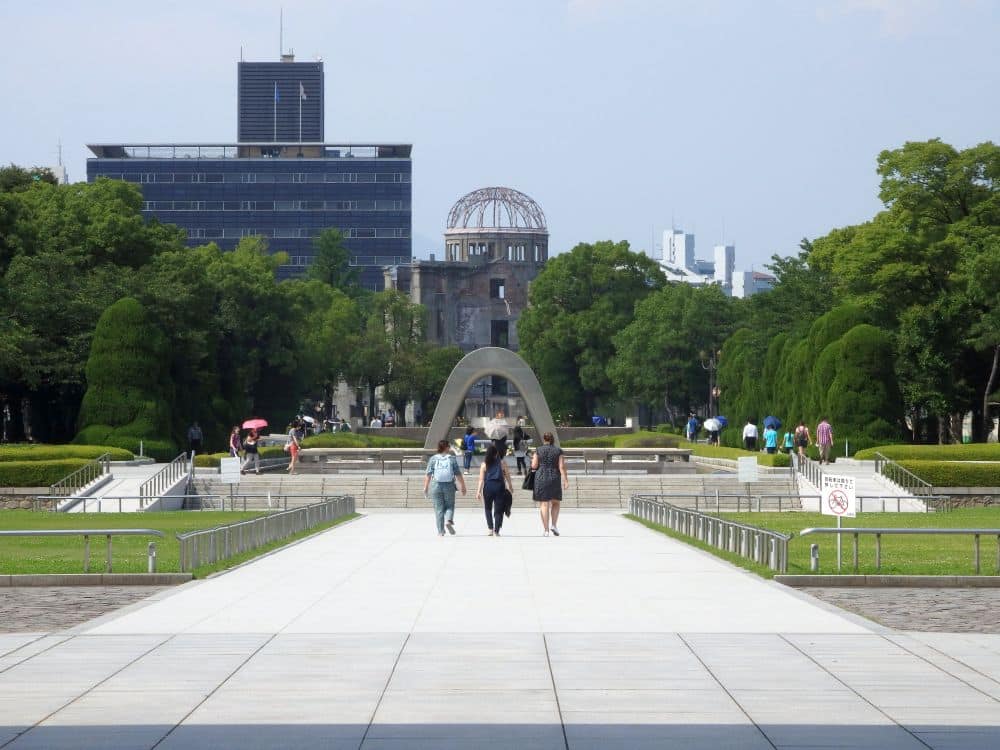
What can you expect on a visit to Hiroshima Peace Memorial?
It’s a very meditative, reflective place to visit, not so much because of Genbaku Dome but because of the memorials that dot the area nearby – the Peace Memorial Park – and its museum.
There are several sites to visit, besides the Genbaku Dome:
- The Hiroshima Peace Memorial Museum: Here you can learn about Hiroshima before the blast, about what happened that day, about the various effects of nuclear weapons, and about the politics of nuclear weapons. It also has a section on Sadako Sasaki, the girl described in Eleanor Coerr’s children’s book Sadako and the Thousand Paper Cranes.
- The Cenotaph for the A-Bomb Victims is an arched monument bearing the names of all the victims.
- The Peace Flame: The intention is for this eternal flame to remain lit until all nuclear weapons are destroyed.
- The Hiroshima National Peace Memorial Hall for the Atomic Bomb Victims: This hall is entered via a circular ramp down into the ground arranged around a small fountain. The hall is filled with symbols of the time of the blast (8:15am) and the number of victims (140,000).
- Atomic Bomb Memorial Mound: This earthen mound contains the ashes of 70,000 victims of the bombing who were never identified.
- Children’s Peace Monument: A statue based on Sadako Sasaki and her paper cranes. People still bring folded cranes to leave at the statue.
- Peace Bell: Visitors ring the bell to call for world peace.
- Cenotaph for Korean Victims: It’s not clear how many people in Hiroshima that day were Koreans, but this is their own memorial.
- The Gates of Peace: These gates are inscribed with the word “peace” in lots of languages.
There are dozens of smaller memorials and monuments scattered throughout the Peace Park. Just stroll around and you’ll seem them.
Notice that if you look through the curved structure of the Cenotaph, it aligns with and visually frames the Peace Flame and the Genbaku Dome.
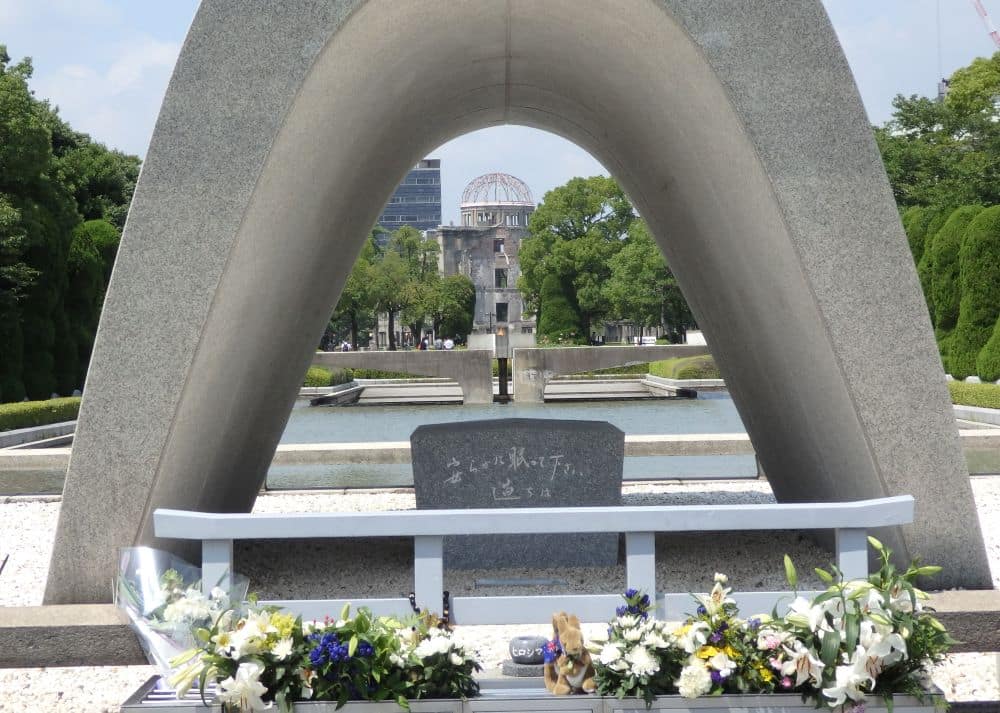
Is Hiroshima Peace Memorial worth visiting?
Even if you feel like you already know about Hiroshima or you feel like it’s too heavy a topic, I’d recommend going to see it anyway. It is a moving and educational experience; like Auschwitz, it’s something everyone should know about.
If you have children who are ready to learn about the topic or who have read Sadako and the Thousand Paper Cranes (which I’d certainly recommend), strolling around the park would be a relatively gentle way to teach them about the topic as you walk and visit various memorials. Depending on the child’s age, the museum might be a bit more emotional for them. It displays very ordinary items from children who died that day, and recognizable things like roof tiles and glass bottles that were bent from the extreme heat.
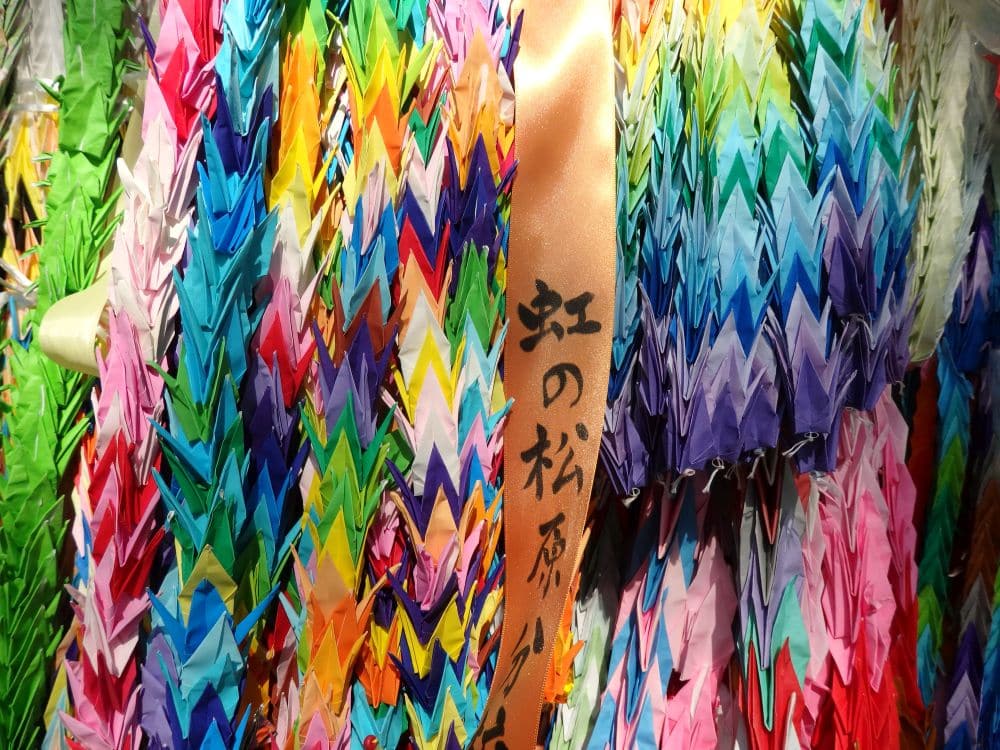
Tips for visiting Hiroshima
Take your time to stroll around the park. It’s a pleasant, green place, despite the grim topic: an oasis in the middle of a large and modern city.
Book your accommodations in Hiroshima.
If you don’t have much time, the museum should be your first priority, followed by the Memorial Hall.
If you don’t know more than the general history, it would definitely be worth your while to take a tour so you can fully understand what you’re seeing. Try this guided cycling tour or this private tour.
Another UNESCO World Heritage site, Itsukushima Shinto Shrine, is not far from Hiroshima, so it would make sense to combine the two visits. This full-day private tour includes both.
If you are there on August 6, you can attend the Hiroshima Peace Memorial Ceremony. It starts at 8 in the morning at the Cenotaph.
A foodie tip: a Hiroshima specialty is okonomiyaki, a savory pancake piled with a variety of ingredients and topped with barbeque sauce.
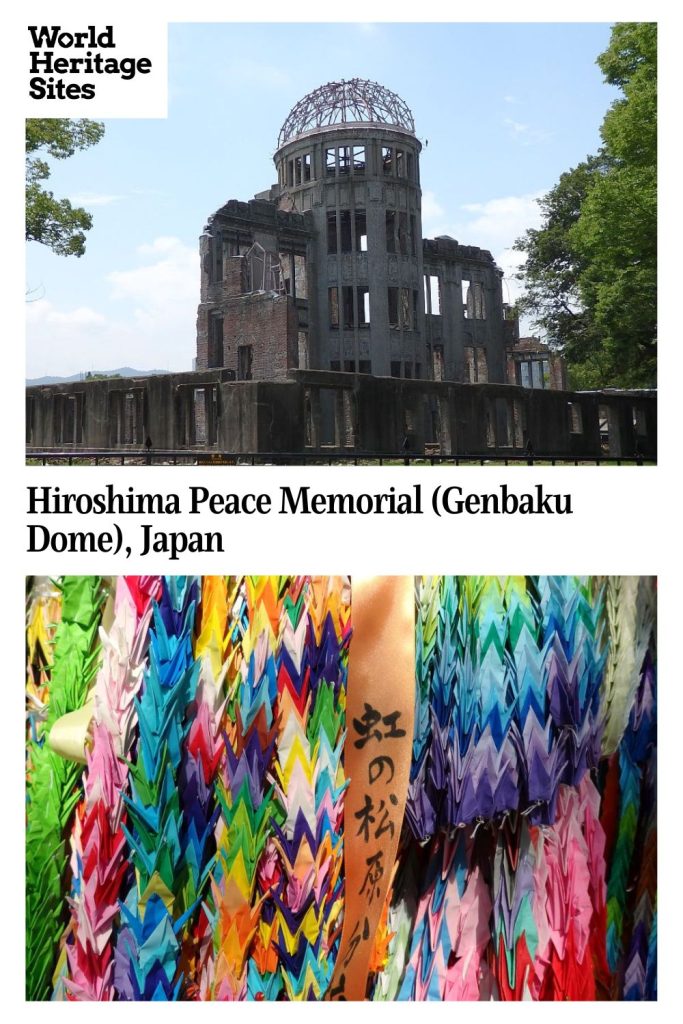
Where is the Hiroshima Peace Memorial?
The park is mostly on a triangular piece of land in what was, before the blast, the center of the city of Hiroshima. The park is bounded on the south by Peace Boulevard and on the other two sides by the Ota and the Motoyasu Rivers. Genbaku Dome is on the opposite bank near the top of the triangle.
If you take the shinkansen (the fastest train), Hiroshima is about an hour and a half away from Kyoto, making it doable as a day trip from Kyoto. It’s four hours away from Tokyo. Of course, with slower trains it’ll take longer. The Hiroshima train station is about three kilometers away from the park. If you don’t want to walk, take tram 2 or 6 from the station.
For more information about Hiroshima Peace Memorial, its opening hours and admission fees, see its official website (Choose auto-translate at the top).
Have you been to Hiroshima Peace Memorial? If so, do you have any additional information or advice about it? Please add your comments below!
